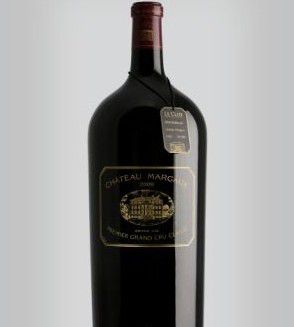旅游英语:定陵 Dingling Mausoleum
|
Dingling, the underground mausoleum of Emperor Wan Li, is one of the thirteen imperial tombs of the Ming Dynasty (1368-1644). Emperor Wan Li (1573-1620) ordered the construction of his own tomb when he was 22 and it took six years to complete the construction which cost about two year's land taxes of the entire empire. The Emperor gave a party in his own funeral chamber, so the chronicles say, to mark its completion, and thirty years later he was buried in it amid a splendid ceremony. Some fifty kilometers northwest of Beijing city center, the group of tombs (known as Ming Tombs) near Dingling are scattered around the southern slopes of the Heavenly Longevity Mountains(1), bounded by hills on three sides with a southern exposure to an open plain. The approach to the Ming Tombs is a shaded 7-kilometer-long road known as the Sacred Way. Its beginning is marked with a marble archway standing 27 meters long and 15 meters high. The marble archway is similar to the triumphal arches of Europe (Paris, Rome, Berlin, etc.). This archway, one of the finest and best preserved in the country, was erected in 1540, at a time when Chinese architecture had reached its climax. A stone table nearby proclaims that entrants must dismount at this point and proceed on foot, that admittance beyond the archway was forbidden to ordinary citizens, and that violating this law was punishable by death. Further on, this road is lined with gigantic stone statues, 24 of lions, camels, elephants, horses, and mythical animals and 12 of generals, civil mandarins, and courtiers(2). Dingling consists of the underground palace and surface structures, most of which are now in ruin, leaving the magnificent soul Tower still standing in a spacious courtyard. Each corner of the Tower is a single block of stone. The rafters, beams and architraves are also carved out of stone and decorated with colorful motifs. The Tower houses a large stone tablet inscribed with Wan Li's posthumous title. Immediately behind the tower is the burial mound encircled by a 700-meter-long brick wall. The mound is called the Precious City and directly beneath it is a mammoth tomb-the Underground Palace, where the emperor and his two empresses were expected to live an eternal life in splendor and luxury. The Underground Palace lies 27 metes below the surface. A flight of stone steps leads down to the main entrance, which is a richly carved gateway with a double-leaf marble door. Each leaf, 4 tons in weight, hinges on an axis which is carved from the same piece of marble. The lower end of the axis rests in a hole on the stone doorstep and the upper end in a hole of the bronze lintel which weights ten tons. Each marble leaf, incredible, is thicker near the axis and tapers off toward the middle of the door. This allows one person to open and close the massive door easily. The door was ingeniously sealed on the burial scene by a stone bar, known as the "Self-acting stone." Once put in place from inside, this bolt would prevent the door from ever being opened again. The Underground Palace consists of three aligned vaults: the Ante-Chamber, the Sacrificial Chamber and the Burial Chamber. Each chamber is provided with an entrance gate as massive as the main gate. The Ante-Chamber is now bare. The Sacrificial Chamber, flanked with an annex chamber on each side, contains three white thrones. The central one, carved with dragons in high relief on its back and sides, was for the emperor, who was flanked in death by two empresses on thrones carved with phoenixes. In front of each throne is a set of five-altar pieces and a large blue-and -white porcelain jar still containing oil and wick in a bronze tube. This is called "everlasting lamp"(3) which was supposed to provide "everlasting light". Midway along the side walls are simple arched doorways leading into the annexes. Each annex contains a stone couch on which an empress's coffin was to rest. In the center of each couch there is a square hole in which yellow earth was placed, presenting a secret connection between the coffin and the earth. At the end of each annex is a huge gate with a self-acting stone. Beyond the gate is a vaulted passage which is blocked. The passage was intended for the entombment of the empresses should they die after the emperor, as no one was supposed to disturb his corpse. In the Burial Chamber, the largest part of the tomb, stand three red-lacquered coffins, side by side on a white marble platform. The one in the middle is the Emperor's coffin, with the First Empress's on the left and the Second Empress's on the right. Inside each coffin there is another coffin, and thus, each imperial corpse is held in two coffins, one kept within the other. In the narrow spaces between the three sets of coffins are two pairs of vases and three boxes which originally contained a wooden imperial seal and wooden tablets recording the bestowal on the emperor of his posthumous title. There is also an iron helmet decorated with gold and jewels, a suit of mail, a sword, a bow, and iron-tipped arrows. ON either side of the coffins are 26 wooden chests that contain wooden figurines, women's head-dresses decorated with golden phoenixes and jewels, wooden seals with the posthumous titles of the empresses, jade belts, strings of jade pendants, robes, shoes and sets of gold chopsticks, spoons, cups, and wash-basins. Also on the platform were wooden models of sedan chairs, coaches, spears, bows, arrows, flagstaffs with silk banners and other objects used in imperial processions. When the emperor's coffin was opened, a silk shroud, jade cups and jade bowls with a gold cover were first exposed. The shroud was then carefully rolled back, revealing among other precious objects a royal crown which is the only royal crown excavated so far in China. Of Emperor Wan Li, only bones and hair remained. He wore a beard, and his long hair in a top knot was secured with long gold pins. The "dragon robe", in which he was buried is not so well preserved as a similar one buried with him. Rolls of silk, all in gorgeous patterns and many woven with gold thread, form his mattress and bedding. Both empresses' coffins contained phoenix coronets and other headdresses, bronze mirrors and gold boxes for cosmetics and toilet articles. The coronets are of fine gold mesh with dragons and phoenixes, each adorned with more than a hundred germs and five thousand pearls. Most of the relics (some three thousand pieces )are on display in the Dingling Museum Exhibition Hall, which has attracted millions of visitors from China and abroad since the museum opened in 1959. Notes: 1. Heavenly Longevity Mountains 天寿山 |








